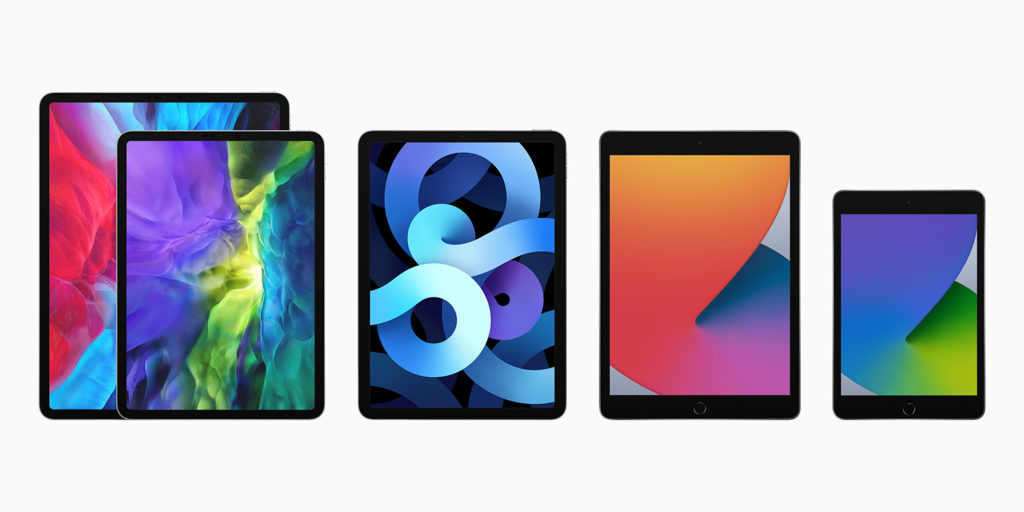Apple may have skipped its customary early-September iPhone announcement, but that just made more time to talk about the iPad at its recent “Time flies” event. And with two intriguing and temptingly priced new tablets on offer, there was plenty to discuss – including the ongoing relevance of the current Pro line.
Here’s the full lowdown on the iPad 8th generation and the new iPad Air.
iPad 8th-gen
Apple started the tablet segment of its event by talking about the tablet that most people will end up buying. The eighth tablet to earn the standalone iPad name places the onus on value, with a price tag starting from just $329 for the Wi-Fi model and $459 for the Wi-Fi + Cellular model.
The form factor will be familiar to anyone who’s bought a non-Pro iPad in recent years, with a familiar large forehead and chin, and the latter housing a trusty Touch ID fingerprint sensor. Also returning from the iPad 7th-gen is a 10.2-inch Retina display. Apple even admitted that the iPad 8th gen would fit existing cases, and it works with the first-gen Apple Pencil.
So far so samey, but it’s inside where the changes can really be felt. The new iPad packs an A12 Bionic chip, which represents a two-generation leap forward for the predecessor, and introduces Apple’s powerful Neural Engine to the entry-level iPad for the first time. Meanwhile, a two-fold boost to graphical power should make this an excellent machine for playing Apple Arcade games or getting creative with editing apps.
Customers can order the new iPad today, with availability beginning Friday, September 18.
New iPad Air
By far the most exciting iPad announcement of the event was the new iPad Air. Unlike the iPad 8th-gen, this is a complete reworking of Apple’s mid-tier line, with five colorful finishes (silver, space gray, rose gold, green, and sky blue) and a crisp new design.
If you’ve used either of the last two iPad Pro models, you’ll recognize the look of the iPad Air immediately. It shares a similar balance of squared-off edges, rounded corners, and minimal bezels. Up front is a 10.9-inch Liquid Retina display, which is only fractionally smaller than the 11-inch iPad Pro.
There’s no Face ID with the iPad Air, though. (You’ll still get a basic 7MP FaceTime camera, but no fancy face-scanning.) Instead, Apple has placed a Touch ID sensor under an enlarged power button, which sits on the top edge of the tablet.
It also packs the iPhone 11’s A14 Bionic chip, which would appear to be more advanced than the iPad Pro’s A12Z Bionic – though we’ll have to wait for benchmark tests to be sure.
The new Air switches to a USB-C port in place of Apple’s proprietary (and generally inferior) Lightning standard, just like the Pro. Add in support for the second-generation Apple Pencil, and you might be wondering why anyone would consider buying an iPad Pro in late 2020.
There are still a few reasons, of course. The Air’s display doesn’t support a 120Hz refresh rate, and it doesn’t get quite as bright as the Pro. You don’t get the same quad-speaker set-up (though there is still stereo sound in landscape), nor does the Air get the same wide-angle camera and LiDAR sensor. It’s packing just a single 12MP camera.
Finally, the new iPad Air limits your storage to a maximum of 256GB (there’s also a 64GB model), whereas the iPad Pro starts at 512GB and stretches to 1TB.
But when you consider that the new iPad Air starts from just $599 – that’s $200 cheaper than the iPad Pro – it very much looks like the best value iPad in the range. At least until the next iteration of the Pro comes around. We’ll know for sure when it rolls out in October.

